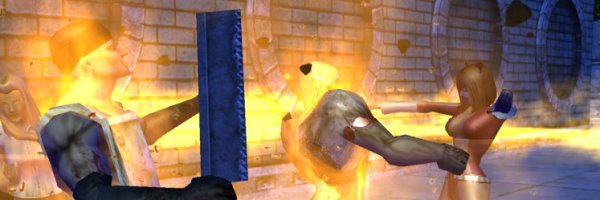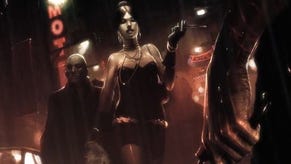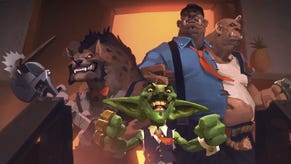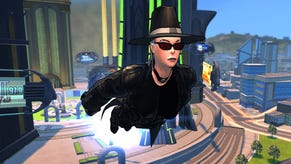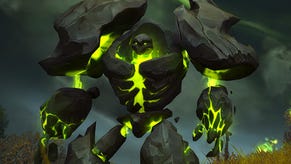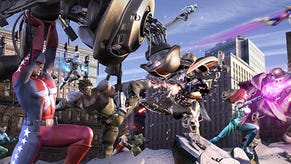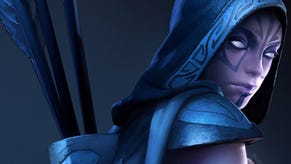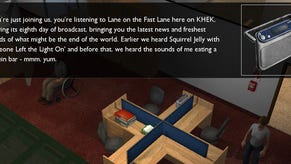The Making Of: City of Heroes
[I was rooting around my hard-drive, trying to find the Freedom Force post-mortem which I swear to God I wrote, and I hit on something else similarly spandex-clad. The interview was done with Jack Emmert towards the end of 2004, so bear that in mind for some of the comments made.]
City of Heroes was the surprise Massively-Multiplayer game hit of the year. Yes, World of Warcraft dominated... but the surprise wasn't that it was a success, but the sheer scale of it. For a game to come from a team no-one had heard of, about a topic that had oft seemed commercially unviable, and to quietly revolutionise the genre with a stripped-down action-RPG… well, that’s a twist ending. No-one saw this one coming, True Believer.
We take a few minutes to secure an audience with the public face of City of Heroes, at publisher NCSoft’s recent European launch. He’s the Statesman, the defender of truth, justice and reasonable ping. But no-one’s seen him in the same room at the time with mild-mannered Lead Designer Jack Emmert. Could these two figures be connected?
“Initially, City of Heroes was the brainchild of two people: Rick Dakan and Michael Lewis,” notes Jack, clearly dodging the Secret Identity issue, “They were childhood friends, and they had an idea for a superhero MMO. They’d been a little disillusioned by the fact the genre had remained pretty much fantasy based, when there was so much opportunity for growth. Michael Lewis became quite successful in a videochip company, he sold it, and gained investment money to found Cryptic Studios. Rick asked me to join them – so I was sort of employee number 2.”
Rick knew Jack from the world of pen and paper games, where Jack did work for companies like White Wolf and Wizards of the Coast, though, he grins, “Nothing really good, to be honest”. With money and concept, all they needed was the magic of modern computer science. “I knew some people who had a tech demo which were pitching an idea and hadn’t had any luck,” Jack remembers, “They had the technical expertise to create City of Heroes, and so we all joined up and formed Cryptic Studios in the July of 2000”
Trying to find a buyer for the game, however, was more troublesome. When asked for reasons, Jack has a couple, one reasonable enough, one less so. “One was that Cryptic studios had never done anything before, and publishers are always iffy about that,” Jack notes, “The second thing is that no-one believed in superhero games. Even now, there aren’t that many and even those that do come out are all licensed. Spiderman, X-men or whatever… which is fine, but most people don’t view superheroes as a genre. They just take it as licensed material. At the time, they really didn’t get it”. In other words, the Curse of the Superhero game, the 90s games phenomena where no-one made games based around tight Spandex. Thankfully, gone. “It doesn’t exist anymore,” grins Jack, “thanks to us and Freedom Force”
Being a new company, starting from scratch, the actual making of the game was also challenging. “Two major problems,” Jack reminisces, “One was process. We didn’t have a good process established for creating the design of the game and the testing of it. It wasn’t a problem when there was just the five of us – but was a real problem when there were ten or fifteen of us. The second problem was naivety. There was so much we didn’t know about making a Massively multiplayer game. We just didn’t understand the amazing mistakes we were making. We had to go through the school of hard knocks to learn that certain things you want and certain things you don’t want”.
More than anything, City of Heroes is a game which knows what it wanted. Rather than dozens of half-functional aspects, its launch focused tightly on two areas: tight combat and huge levels of character customisation. “You can only do so much well,” Jack insists, “It was just a decision we made in January/February of 2003. We just said that “We really should start focusing on what this game is going to be”. We wanted it to be everything, but it wasn’t realistic. We’d run into too many issues. We thought it was better to have a really stable, fun game and then add to it. The essence of a superhero is combat, so that’s what we did, knowing we could grow the game over time and add more through patches. And to be honest, it’s a mistake many MMOs make, is that they try to be everything that Everquest does… forgetting that Everquest wasn’t Everquest when it released”. Their focus on characters was particularly well judged, with the character-creation a virtual game in of itself. Sensibly, rather than limiting the number of characters you can have, Cryptic lets you express yourselves. “We knew that people would love doing that,” Jack claims proudly, “And in America we have eleven servers, so you can create up to 88 characters. And that’s fine – people should enjoy that. If it’s something fun, let them do it.”
Not that everything was perfect in the released game. “We have really great story arcs, but we don’t really communicate that well in the user-interface,” says Jack, listing out some of City of Heroes’ failings, “Some of the zones aren’t really well organised, in terms of gameplay. They were just thought about as an area. The Tanker archetype is a terrific Massively-multiplayer archetype, and very well balanced, but doesn’t actually have very good comic book parallels, so characters pick a tanker assuming they're going to be the Hulk, when you’re not. You just aren’t. I wish I’d foreseen that.”
He has more wishes too. “I just wish I didn’t sell enhancements in stores,” says Jack, sighing at the way power’s power-ups are acquired. “That’s stupid. What I wanted was people to get enhancements from their contacts, so you’ll have a very limited selection and amount of them. Depending on the contacts you have, you’d have access to a very limited number of things. But YOU may access to others, and we’d end up trading. But there was technical limitations, so we just ended up putting them in stores, but that just devalued them as they were so easily available. No matter how much influence you charge, people don’t think “Wow! I have a “Blank” enhancement”. They just go back and sell them to buy a damage one”.
However, while City of Hero started focus, its nature as a MMO lets it expand in a way that normal games wouldn’t. A series of updates, called “Issues” expand what’s available in the game, adding a variety of new content. How does Cryptic decide what to prioritise? “It’s a combination of two things,” in his traditional breaking down of any situation, “The interest in a particular feature and the amount of time it takes to get a feature in. It’s just a matrix that we use to determine how we slide it into a schedule, as not everything is created equal. Certain are just easier to get into the game than others. Player Versus Player, for instance, is much harder than – say – Capes in retrospect, so comes after Capes”. While people are swishing around with a rug on their backs as we speak, only expect PvP next year [PvP eventually arrived in a minor form in the Arena update and then in a more developed state in City of Villains - Ed].
But the real joy of City of Heroes is that it’s the MMO that you can play without a huge commitment. While diving in for a quick game on many of its competitors is a waste of time, when patrolling the streets of Paragon city it’s possible to just play for an hour and still have a respectable unit of entertainment. This was all carefully planned. “Grouping is not required, so you don’t have to wait around,” explains Jack, “The second thing is that there’s also things for small groups of people. You don’t need to wait for eight people to accomplish anything significant. Travel times aren’t enormous – you can get from Point A to Point B quickly. This was all conscious. These were things we wanted to do as we’d found that there wasn’t an MMP game for people who couldn’t play 20 hours a week. It just didn’t exist, and I wanted City of Heroes to close that gap”
Generally speaking, Cryptic have a cordial convesational relationship with their fanbase (Which isn't a queue to start growling in the comments thread, by the way). The secret of this is actually surprisingly simple. “I actually post on the forums,” notes Jack, “Which is pretty much unheard of for any Massively-multiplayer designers, especially lead designers. They just don’t communicate with their player-base. Other games have evolved a very hostile relationship between the players and the developers. In our game in particular, we’ve tried to communicate what we’re doing, what we’re working on and why we do things. This really works well in terms of the people who post on the forums.”
And, finally, any golden advice to anyone thinking of following in Cryptic’s steps? Jack’s answer is equally simple. “Get ten million dollars. No shit. That’s what it cost. Between initial development and marketing cost, that’s ten millions.” And there goes RPS’s CITY OF JOURNALISTS MMO plans.





